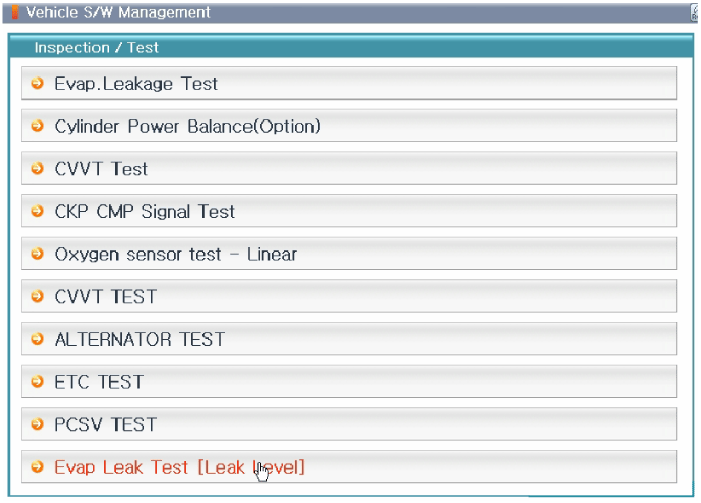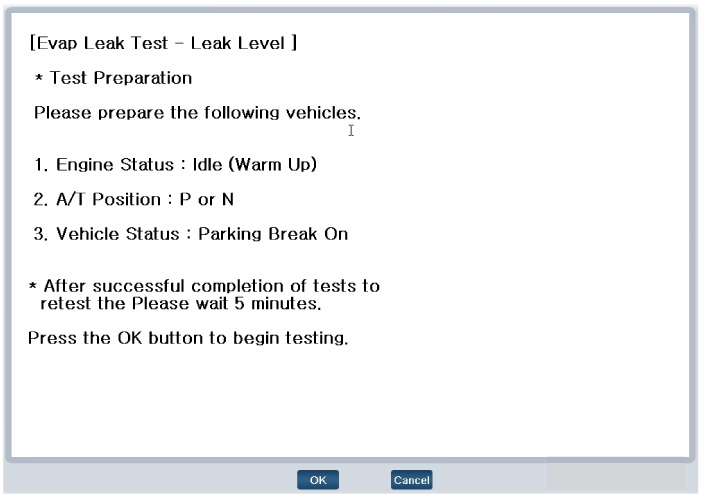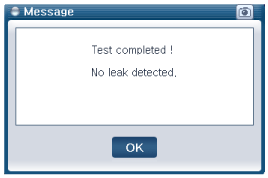 Hyundai Santa Fe: Repair procedures
Hyundai Santa Fe: Repair procedures
Inspection
| [Evap Leak Test] |
Engine Control Module (ECM) controls Purge Control Solenoid Valve (PCSV)
and Canister Close Valve (CCV) for EVAP System diagnosis if the conditions are
satisfied.
ECM displays DTC codes after checking the leak rate through detecting
change of FTPS signal. (Refer to the DTC guide manual for DTC codes.)In addition,
EVAP Leak can be checked through the EVAP Leak Test function of the GDS diagnostic
tool as shown below.
| 1. |
Turn ignition switch OFF.
|
| 2. |
Connect the GDS to Data Link Connector (DLC).
|
| 3. |
Start the engine.
|
| 4. |
Select "Vehicle, Model year, Engine, System".
|
| 5. |
Select "Vehicle S/W Management".
|
| 6. |
Select "Inspection / Test".
|
| 7. |
Select "Evap Leak Test".
|
| 8. |
Perform the procedure in accordance with the message.
|
 Components and Components Location
Components and Components Location
Components Location 1. Purge Control Solenoid Valve (PCSV) 2. Vapor line 3. Fuel tank air filter 4. Canister Close Valve (CCV) 5. Canister 6. Fuel Tank Pressure Sensor (FTPS) ...
 Canister. Repair procedures
Canister. Repair procedures
Removal 1. Turn the ignition switch OFF and disconnect the battery negative (-) cable. 2. Lift the vehicle. 3. Disconnect the canister close valve connector (A). 4. Disconnect the ventilation tube quick-connector ...
See also:
Engine Cover. Repair procedures
Removal and Installation 1. Remove the engine cover (A). 2. Install in the reverse order of removal. ...
Purge Control Solenoid Valve (PCSV). Specifications
Specification Item Specification Coil Resistance (Ω) 19.0 ~ 22.0 [20°C(68°F)] ...
Variable Intake Solenoid (VIS) Valve. Specifications
Specification Item Specification Coil resistance (Ω) 30.0 ~ 35.0 [20°C(68°F)] ...



